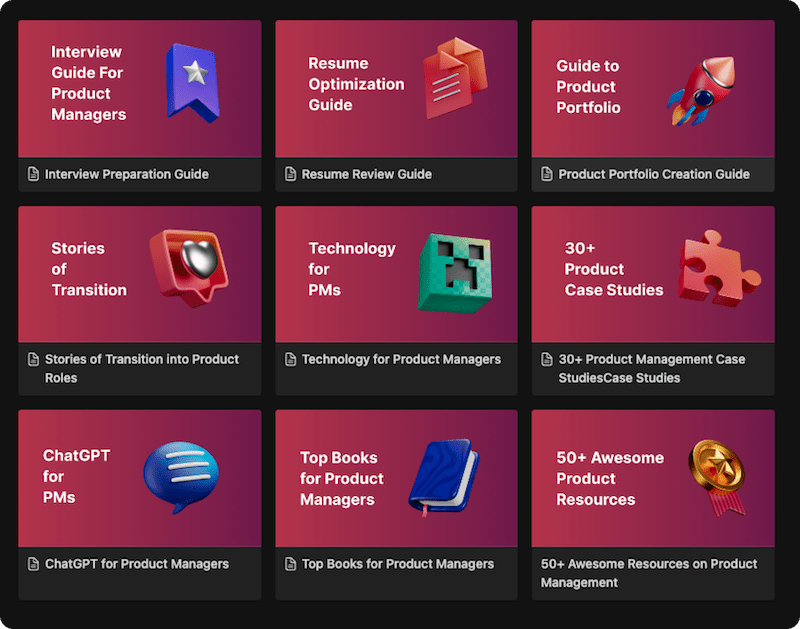As a product manager, you thrive on talking to customers. You love shipping features that delight end-users and watching those engagement metrics climb. But what if your primary customer wasn’t a person Browse your app, but the very engineer sitting across from you? What if your “product” wasn’t a flashy new feature, but a rock-solid API, a shared service, or a set of developer tools? This is the unique and challenging world of Platform Product Management.
While less visible to the outside world, platform product management is the silent engine that drives innovation and scale at every successful tech company. It’s a discipline that requires a unique blend of deep technical knowledge, customer empathy (for a very different kind of customer), and strategic vision. This guide will demystify this critical role, taking you from a beginner’s understanding to a pro-level grasp of what it takes to succeed. You’ll learn the core principles, the key differences from traditional PM work, and the frameworks used to build the foundational products that enable everyone else to succeed.
The Origin: Paving the Cowpaths at Scale
Platform Product Management doesn’t have a single inventor but emerged as a natural consequence of technological scaling. In the early days of major tech companies like Google, Amazon, and Netflix, individual product teams often built their own solutions for common needs like authentication, billing, notifications, or data logging.
As these companies grew, leaders noticed a massive amount of redundant work. They were “paving the same cowpaths” over and over again. This inefficiency led to the creation of centralized platform teams. The goal was to build these common services once, make them robust and reliable, and offer them as a shared resource to the entire organization. The role of the Platform Product Manager was born out of the need to guide these teams, treating these internal services not as one-off projects, but as legitimate products with their own roadmaps, customers, and success metrics.
Core Benefits: Why Companies Invest in Platforms
A strong platform strategy, guided by skilled PMs, is a massive competitive advantage. Here’s why:
- Increased Development Velocity: The number one benefit. By providing reusable components, platform teams empower feature teams to ship products faster, as they don’t have to build everything from scratch.
- Improved Reliability & Consistency: A centralized platform service (like for payments or login) can be hardened, secured, and optimized by a dedicated team, leading to a more stable and consistent experience for all end-users.
- Reduced Costs & Redundancy: It eliminates duplicative work across multiple teams, saving significant engineering hours and operational costs.
- Enables Innovation: By abstracting away complex, foundational problems, platforms free up feature teams to focus their creative energy on experimenting and building novel user experiences.
- Enhanced Governance & Security: A central platform ensures that all products adhere to the same security standards, compliance regulations (like GDPR), and design principles.
A Day in the Life: How Platform Product Management Works
While the core PM skills apply, the day-to-day focus of a Platform PM is unique. Here’s a step-by-step look at their key responsibilities.
Step 1: Identify Your Customer (It’s Your Colleagues)
Your primary customers are the internal developers, data scientists, and other product teams who will consume your platform. A Platform PM must develop deep empathy for these users.
- How: Conduct internal interviews, observe developer workflows, analyze support tickets for your platform, and even embed with a feature team for a sprint to understand their pain points firsthand.
Step 2: Treat Your Platform as a Product
A platform is not a side project. It requires the same strategic thinking as any external product.
- Vision & Roadmap: Define a clear vision for what the platform will enable and create a roadmap that prioritizes the biggest bottlenecks or the most common shared problems.
- Documentation & DX: Your documentation is your user interface. Clear, comprehensive, and easy-to-find API docs, tutorials, and getting-started guides are non-negotiable. This is all part of the “Developer Experience” (DX).
- Support & SLAs: Provide reliable support channels for your internal customers and establish clear Service-Level Agreements (SLAs) regarding uptime, performance, and reliability.
Step 3: Define Success with the Right Metrics
You can’t use the same metrics as a feature PM. Revenue or Monthly Active Users (MAU) are often irrelevant. Instead, Platform PMs focus on metrics that measure the value they provide to their internal customers:
- Adoption Rate: How many teams/services are using your platform?
- Developer Satisfaction: Use surveys (like NPS, but for internal users) to measure how happy developers are with your platform.
- Time-to-Market Reduction: How much faster can a team ship a feature by using your platform?
- Reliability: Uptime, latency, and error rates of your service.
- Cost Savings: The amount of money saved by eliminating redundant work.
Step 4: Evangelize and Drive Adoption
You can’t mandate that teams use your platform; you have to convince them it’s the best option.
- Internal Marketing: Host brown-bag lunches, write internal blog posts, and create case studies showing how a team successfully used your platform to achieve their goals.
- Build a Paved Road: Make your platform so easy and effective to use that it becomes the “paved road”—the path of least resistance for developers.
Real-World Examples of Platform Products
Platforms can be internal or external.
| Platform Type | Example | The “Product” | Who It Serves | The Value |
| External Platform | Stripe | A suite of payment processing APIs and tools. | External developers at other companies. | Allows any developer to easily and securely accept payments without building a payment system from scratch. |
| External Platform | Amazon Web Services (AWS) | A massive collection of cloud computing services (storage, databases, etc.). | External developers and businesses. | Enables companies to build and scale complex applications without managing their own physical server infrastructure. |
| Internal Platform | A Company’s Design System | A library of reusable UI components, design tokens, and guidelines. | Internal product designers and front-end engineers. | Ensures brand consistency and allows teams to build new user interfaces much faster. |
| Internal Platform | An “Experimentation” Platform | A set of tools that allows any PM to easily set up, run, and analyze A/B tests. | Internal product managers and data analysts. | Empowers all teams to make data-driven decisions without needing a dedicated data science resource for every test. |
Platform PM vs. Feature PM: A Head-to-Head Comparison
This is the most critical distinction to understand.
| Aspect | Feature / Product PM | Platform PM |
| Primary Customer | External end-users (e.g., consumers, business clients). | Internal developers, data scientists, or other product teams. |
| Core Goal | Drive end-user engagement, retention, and revenue. | Drive internal adoption, developer velocity, and system reliability. |
| Key Metrics | MAU, NPS, Conversion Rate, LTV, Revenue. | Adoption Rate, Developer Satisfaction, Uptime, Latency, Cost Savings. |
| Feedback Loop | User interviews, surveys, analytics, app store reviews. | Internal support tickets, developer interviews, GitHub issues, SLAs. |
| Required Skills | Deep market and user empathy, strong business acumen. | Deep technical expertise, systems thinking, API design knowledge. |
| The Analogy | Builds the Lego castle. | Builds the reusable Lego bricks. |
Common Mistakes to Avoid in Platform Product Management
The path of a Platform PM is filled with unique challenges. Avoid these common traps:
- Treating it like a Project, Not a Product: A project has an end date. A platform is a product that must be supported, maintained, and iterated upon indefinitely.
- Building a “Leaky Abstraction”: If your platform is too complex or doesn’t fully solve the underlying problem, developers will have to build workarounds, defeating the entire purpose.
- Not Investing in Documentation: For a platform PM, documentation isn’t a chore; it’s a core feature of the product. Poor documentation leads to zero adoption.
- Forgetting to “Sell” Your Platform: You must actively market your platform internally and prove its value. If you build it, they will not just come.
- Measuring the Wrong Things: Trying to justify your existence with vanity metrics or tying your work to lagging indicators like company revenue is a mistake. Focus on the direct value you provide to your internal customers.
Conclusion
Platform Product Management is the art and science of building the foundation upon which all other innovation rests. It is a role of immense leverage—a single improvement to a core platform can positively impact dozens of customer-facing products and save thousands of engineering hours. While the glory often goes to the flashy, user-facing features, the quiet, reliable work of platform teams is what enables sustainable, high-velocity growth.
For product managers drawn to complex, technical problems and who find satisfaction in enabling the success of others, it is an incredibly rewarding path. It requires you to think like a systems architect, evangelize like a marketer, and serve your internal customers with the same empathy you would an external one. By building the “paved roads” and providing the best “Lego bricks,” Platform Product Managers don’t just build products; they build the very capability for their company to win.
FAQ’s
Platform Product Management is a specialized PM role focused on building foundational products—like APIs, shared services, or developer tools—that are used by other teams within the company. Instead of building features for end-users, they build tools for developers, enabling the entire organization to build products faster and more reliably.
Generally, yes. Because a Platform PM’s customers are engineers and their products are often APIs or technical services, a deep level of technical understanding is required to be credible, understand user needs, and make informed decisions about the product roadmap and architecture.
The role is challenging because the impact is often indirect, making it harder to measure success. The customers are also your highly technical colleagues, who have strong opinions and can often build a solution themselves if they don’t like yours. It requires a unique combination of technical depth, influence, and strategic thinking.
If you are a traditional PM, start by working closely with your engineering team on technical projects, taking an interest in the underlying architecture. If you are an engineer, you are already the target customer and have a huge advantage. Focus on developing your product sense, customer interviewing skills (for developers), and strategic communication abilities.
Absolutely. It’s a highly valued and impactful career path. Successful Platform PMs develop a deep, systems-level understanding of how technology businesses work. They are often seen as key strategic leaders, and the role can be a great stepping stone to senior product leadership or technical leadership positions like CTO.
Learn better with active recall quiz
How well do you know What Is Platform Product Management? Let’s find out with this quick quiz! (just 10 questions)


